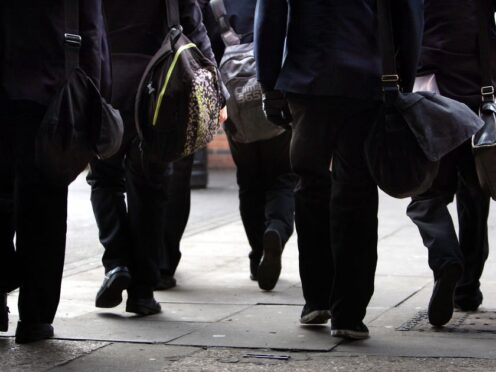
Around two in three special schools in England were at or over capacity in the last academic year, the Department for Education (DfE) has said.
There were approximately 4,000 more pupils on roll in special schools than the reported capacity, according to Department for Education (DfE) data.
The Government publication on school capacity looked at data on special educational needs and disabilities (Send) provision for the first time.
There were 148,000 special school places reported across 1,077 schools in England as of May last year, but there were around 152,000 pupils on the roll during the same period.
The DfE said: “This means that there are approximately 4,000 more pupils on roll in special schools than reported capacity.
“This is due to the number of schools at or over capacity (around two-thirds), but also may be a result of the way capacity has been measured, which does not take account of type of need.”
The figures come as sector leaders and politicians have warned of a “crisis” in provision and support for children with Send across the country.
Overall, around 18% of all state schools were at or in excess of capacity in 2022/23, the figures show.
Nearly a quarter (23%) of secondary schools were at or over capacity, while 17% of primary schools were at or in excess of capacity.
The DfE said the special school figures were “official statistics in development” and that they expected the quality of the data to improve over time.
Rob Williams, senior policy adviser at school leaders’ union NAHT, said: “These figures reflect the complete mismatch between the needs of the growing numbers of pupils with Send and the funding available to schools and local authorities to support them.
“This means too many children are unable to get the education they need in the right setting at the right time.
“There are simply not enough special schools for pupils who need more specialist support.
“Many children are therefore instead being placed in mainstream schools which may themselves be over capacity, and may not have the staff, expertise or resources needed to offer the best possible education and support.
“Urgent government action is needed to address this worrying situation and ministers must go much further in boosting funding for Send education.”
Earlier this month, Education Secretary Gillian Keegan admitted to school and college leaders that the Government had not done enough on Send.
Addressing the Association of School and College Leaders (ASCL) annual conference, Ms Keegan said: “If you look at special educational needs, we haven’t built enough special educational needs places or schools.”
Speaking at the same conference, shadow education secretary Bridget Phillipson said the challenge facing children with Send was “enormous” and it would take time for Labour to “turn that around”.
The Chancellor announced in his spring Budget that £105 million would be invested over the next four years to build 15 new special free schools.
The Treasury said it would create more than 2,000 additional places for children with Send in England.
Geoff Barton, general secretary of the ASCL, said: “The current system for supporting children with special educational needs is in crisis, with both mainstream and special schools lacking the capacity and resources needed to help the growing number of pupils requiring Send support.
“The Government’s recent announcement of new special schools is welcome and desperately needed but will take years to materialise.
“These new schools will not meet the needs of children currently in the system who are unable to access the support they require, and neither will the Government’s planned reforms of the Send system which are also some years away from delivery and are underfunded.
“Children and young people with special educational needs desperately require a much greater sense of urgency from the Government that meets their needs right now.”

Enjoy the convenience of having The Sunday Post delivered as a digital ePaper straight to your smartphone, tablet or computer.
Subscribe for only £5.49 a month and enjoy all the benefits of the printed paper as a digital replica.
Subscribe